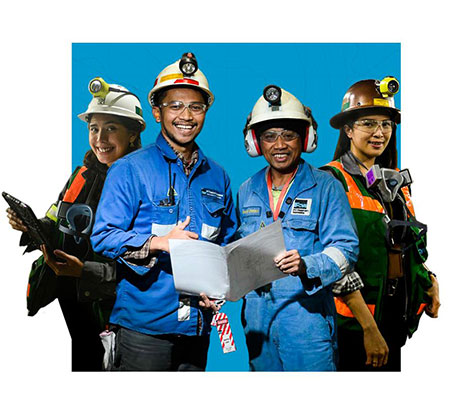15 December 2021

BUMN Holding Mining Industry Indonesia (MIND ID) continuously pursues emission reduction targets in the energy sector to support the government's efforts to achieve net zero-emission (NZE) by 2060 that are carried out by all holding members consisting of PT Aneka Tambang Tbk, PT Bukit Asam Tbk, PT Freeport Indonesia, PT Inalum (Persero), and PT Timah Tbk.
MIND ID Director of Institutional Relations Dany Amrul Ichdan said that the sustainability pathway is the foundation for MIND ID in managing environmental, social, governance (ESG) performance which is based on national regulations and international standards ISO 26000 and ICMM. "The de-carbonization program manifested one of the pillars of the sustainability pathway of environment and climate change," he said in a discussion with the media, quoted Wednesday (15/12/2021). He explained that in 2019, the company's emissions amounted to 2.9 million tons of CO2e greenhouse gas emissions from two scopes.
The first scope comes from the use of fossil fuels, such as coal and marine fuel oil for processing, and diesel fuel for project vehicles/heavy equipment. This activity produces 2.8 million tons of CO2e. The second scope comes from the use of electricity sourced from the State-Owned Electricity Company (PLN) grid for operations and production activities by producing 0.1 million tons of CO2e. MIND ID projected that by 2030 the total emissions produced could reach 8.7 million tons of CO2e. However, to comply with the Nationally Determined Contribution (NDC) of the energy sector, the emission produced by MIND is targeted at 7.3 million tons of CO2e in 2030. That means, companies must reduce their emissions by 1.4 million tons of CO2e. Dany said that currently, the company has identified the potential for emission reductions of 0.63 million tons of CO2e.
On the other hand, there is a potential emission reduction of 0.77 million tons of CO2e which is being identified by MIND ID to achieve the emission reduction target in 2030. "There is a gap of 1.4 million tons of CO2e, for 2030 with the decarbonization program that we must fill this gap. MIND ID will explore opportunities for decarbonization initiatives as a contribution to net-zero emissions," he said. He explained in detail the efforts that have been identified and started to run by MIND ID since 2021, including the plan to switch fuel from marine fuel oil (MFO) to liquefied natural gas (LNG) which will be initiated by Antam and Timah to reduce total greenhouse emissions effect of 121,700 tons of CO2e per year.
As for carbon offsets or nature-based solutions, the reclamation program on ex-mining land and watershed rehabilitation carried out by Bukit Asam and Timah can reduce greenhouse gas emissions by 470,807 tons CO2e per year. A program to develop coal handling facilities at the Bukit Asam railway loading station is carried out to reduce greenhouse gas emissions by 21,000 tons of CO2e per year. Besides, the implementation of electric buses by Bukit Asam can reduce greenhouse gas emissions by 100 tons of CO2e per year. Meanwhile, at Inalum, efforts were carried out by developing calcined petroleum coke (CPC) and an alumina refinery unit adjacent to the company to reduce imports. Those efforts can reduce greenhouse gas emissions by 8,011 tons of CO2e per year.
Inalum is also exploring a "step-out" opportunity by encouraging the development of new pot reduction designs to improve current efficiency which is estimated to reduce greenhouse gas emissions by 12.873 tons CO2e per year. Meanwhile, the opportunities that are being explored and identified by MIND ID include the initiation of the use of renewable energy, namely Solar PV for electricity, which is currently being developed followed by the exploration of the electrification of mining equipment such as bulldozers, haulage trucks, and excavators. Further, MIND ID is replacing vehicles and equipment with natural gas that is low in emissions and conducting studies and development of Carbon Capture and Storage (CCS) or Carbon Capture, Utilization, Storage (CCUS) to reduce CO2 emissions, and mining battery-grade lithium carbonate to support electric vehicles.
http://money.kompas.com/read/2021/12/15/085507426/ini-strategi-mind-id-kejar-target-penurunan-emisi
Kami menghimbau para pencari kerja untuk berhati-hati dan mewaspadai beragam modus penipuan perekrutan yang mengatasnamakan PT Freeport Indonesia. Dalam setiap proses rekrutmen dan penerimaan karyawan, PT Freeport Indonesia maupun konsultan rekruitmennya tidak memungut biaya apapun.
Untuk melihat lowongan, silakan akses melalui link berikut: ptfi e-recruitment
Untuk melihat informasi magang, silakan akses melalui link berikut: Internship Program
